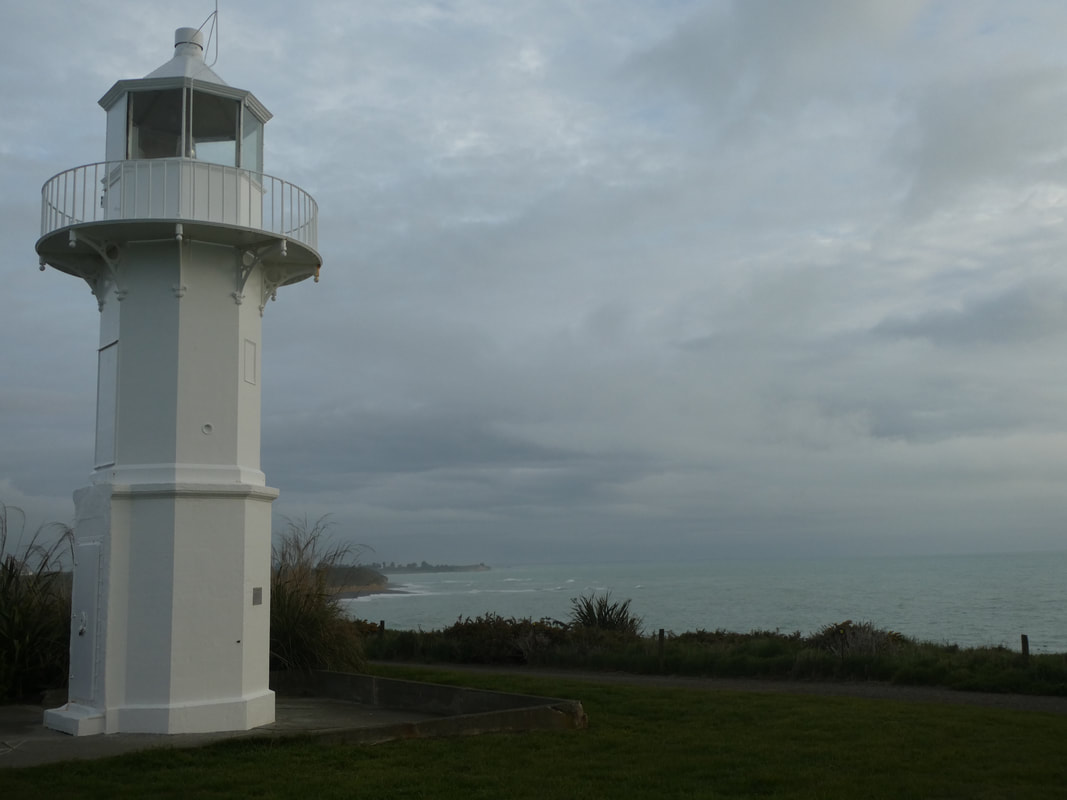|
I wonder how many of you have come across these new additions to our outdoor areas in Timaru? I saw my first ones around the shoreline near Patiti Point and was delighted to discover them and read the information on offer.
So far there are 5 of them installed at Caroline Bay and Patiti Point. They feature artworks from the Aigantighe Art Gallery’s Permanent Collection. What you see is a copy of a painting that relates to the location of the sign and its surroundings. Accompanied by an explanatory text and historical images from the South Canterbury Museum’s collection which gives the artwork greater context. It’s a clever idea that brings our historic art collection into the community. The artworks selected reflect past scenes and place them back in the environment that inspired them when Timaru was first being formed all those years ago. The signs have been made with the help of local businesses who have given their time, energy and creativity to the project. WuHoo Timaru was initiated by Roselyn and Chris Fauth who, along with the Aigantighe Art Gallery and Friends of the Aigantighe launched this programme and there is another round of signs that are nearing completion and should be installed any time now. Roselyn and Chris started their very impressive WuHoo project as a way for families to find fun but cost free things to do in Timaru that get people out and about in our town. Their website, wuhootimaru, is full of suggestions for walks, scavenger hunts, parks and art discoveries about town and, with the holidays coming up, should be invaluable for our locals as well as visitors. In our latest Timaru Civic Trust newsletter we’ve given this project a ‘Thumbs Up’. What they are doing and accomplishing for our town is a real achievement and I can’t wait to see where the next round of art boards turn up. Karen Rolleston
0 Comments
 One of the nicest things to come across while walking and enjoying our outdoor spaces is a well-positioned bench or seat. I discover them frequently on my meanderings and am always happy to sit a while and contemplate my surroundings. Often these are memorials to others and have been placed where they are by loved ones, or as a bequest, in order to commemorate the life and passing of a family member or dear friend. Individuals or couples who are no longer with us but have once enjoyed the same corners, views and walks that we do and wanted to share their connection with a special place in a tangible way for others to take pleasure in. One of my favourites is the seat across the path from Tuhawaiki Jacks Point Lighthouse on the coastal walkway. This one was erected in memory of man who tragically died as a result of a motor cycle accident in 2007. Beautifully hand carved and positioned overlooking the surf below and out to the wide ocean beyond. It’s a place to seek comfort and a poignant reminder for his friends and family but, to those of us who may not have known him, it is a place to stop and rest, savour the fresh air and to think of the people who have lived their lives and have gone before us. Karen Rolleston The cast iron Lighthouse that sits two thirds of the way along our coastal walk was originally erected on Somes Island in Wellington Harbour in November 1865. Imported from England it saw many years of good service before it was decided that a stronger light was required for the island. A new lighthouse was built and began operation in February 1900. The old tower was removed and taken down to Jacks Point in Timaru where it sits today.
Jacks Point or Tuhawaiki Point gets its name from Hone (Jack) Tuhawaiki, a famous Maori warrior chief. Steering his boat through a stormy sea, while approaching Timaru, he was thrown overboard by a huge wave and tragically drowned near the rocks at the base of the clay cliffs in 1844. History reveals him to be a fascinating character, belonging to the Ngai Tahu and Kai Tahu tribes. The Tuhawaiki or Jacks Point Lighthouse was constructed on site in 1903 by the Timaru harbour board in an effort to overcome the ineffectiveness of the harbour light. It’s seen a few changes in fuel sources over the years. In 1866 it was powered by burning colza (rapeseed) oil. By 1903 the tower was fitted with an incandescent light, at the time this was a relatively untried lighting method in New Zealand. It worked by oil vapour at high pressure being sprayed into a mantle, which once ignited produced a brilliant white light. Such lights required less maintenance than the older oil burning lights. Nowadays it is fitted with a flashing beacon which is illuminated by a 100 watt tungsten halogen bulb. The light is powered by mains electricity backed up by battery power in the event of power failure. It has a range of 16 kilometres. From 1904 Tuhawaiki (Jacks) Point Lighthouse had a sole keeper who lived on site until the station was fully automated in 1930. After demanning the light was maintained by harbour employees from the nearby port of Timaru. These days it is monitored remotely from Maritime New Zealand’s Wellington Office. Karen Rolleston I am a fan of our regions red brick buildings and this one is a favourite of mine. Once it would have been dwarfed by the beautiful Trinity Presbyterian church that had stood for 100 years a little further along Hally Terrace. Sadly the church did not survive the insurance battles that followed the 2010 earthquakes and was bulldozed soon afterwards.
The Sunday School Hall remains on its corner site. Its origins came about at the AGM of the church in August 1915 when the superintendent of the Sabbath school, Mr Isaac Smith, made an impassioned plea for a replacement building to house the 150 children and 14 teachers to work in. The Guild family, of Temuka, had decided to pay for a new building in memory of the late James Guild and this Hall is the result of that collaboration. The book ‘Temuka, Through the Years ‘ details the Influenza epidemic that hit the Temuka district in November 1918. “Many locals had taken the train to Christchurch for the Race Carnival and came home suffering the flu, the epidemic took hold. All forms of indoor entertainment were forbidden and church services were held in the open air, the Presbyterian Sunday School became an emergency hospital, while patients recovering, were sent to the Salvation Army Citadel which had been taken over as the convalescent hospital. “ The two-storey, red brick building remained in use by the church until it was sold into private ownership in 2002. Many of the church hall's original structures have been kept intact - including the courtyard pond and three-tier fountain, the hand-forged wrought iron entrance gates swinging off hand-built stone block walls, and the timber floorboards and internal framing. Much work has gone into re purposing the building including the former Sunday schoolrooms and meeting chambers being turned into luxury accommodation and apartments. Karen Rolleston Missing from the photo of this church is the spire. It used to rise above the 60 foot entrance tower and was surrounded by four corner pinnacles, the bases of which are still in place. The completed tower, with spire atop, was once a dominating feature of the Temuka township skyline, reputedly visible from a distance of thirty-two miles away. After the earthquakes in 2011 the spire was deemed unsafe and eventually removed in 2016, I understand it may be replaced at some stage in the future by a fiberglass copy.
The 2 acre site it sits on originally held a small wooden church built to serve the young parish which was formed in 1876. By 1879 the congregation had outgrown this building and plans were begun to replace it. The newly appointed parish priest, Father Louis Fauvel, a Frenchman from Normandie, had a huge influence on the design of the new church. His specifications were based on his parish church in Constances, France, where he had attended seminary. This very substantial building was built using Opihi limestone from the Upper Waitohi district which was donated by Henry Collett and conveyed to the site, some 11 miles distance, by the parishioners. The spire itself was of Oamaru stone. The architect of the church was Henry Evans, of Timaru. Stone work contractors were from Christchurch and the wood work and painting done by Timaru contractors. Work began in 1879 and the new church was completed in 1882. With a peel of bells cast in New York, a four faced clock from London and an impressive collection of 31 stunning stained glass lancet windows, designed and produced in France it was considered one of the most noteworthy churches in Canterbury. St Joseph’s is registered as Category 2 with Heritage New Zealand and it was a wonderful find while driving off the main street in Temuka. Well worth a visit. Karen Rolleston |
View by date Archives
February 2021
Categories |
|
|







